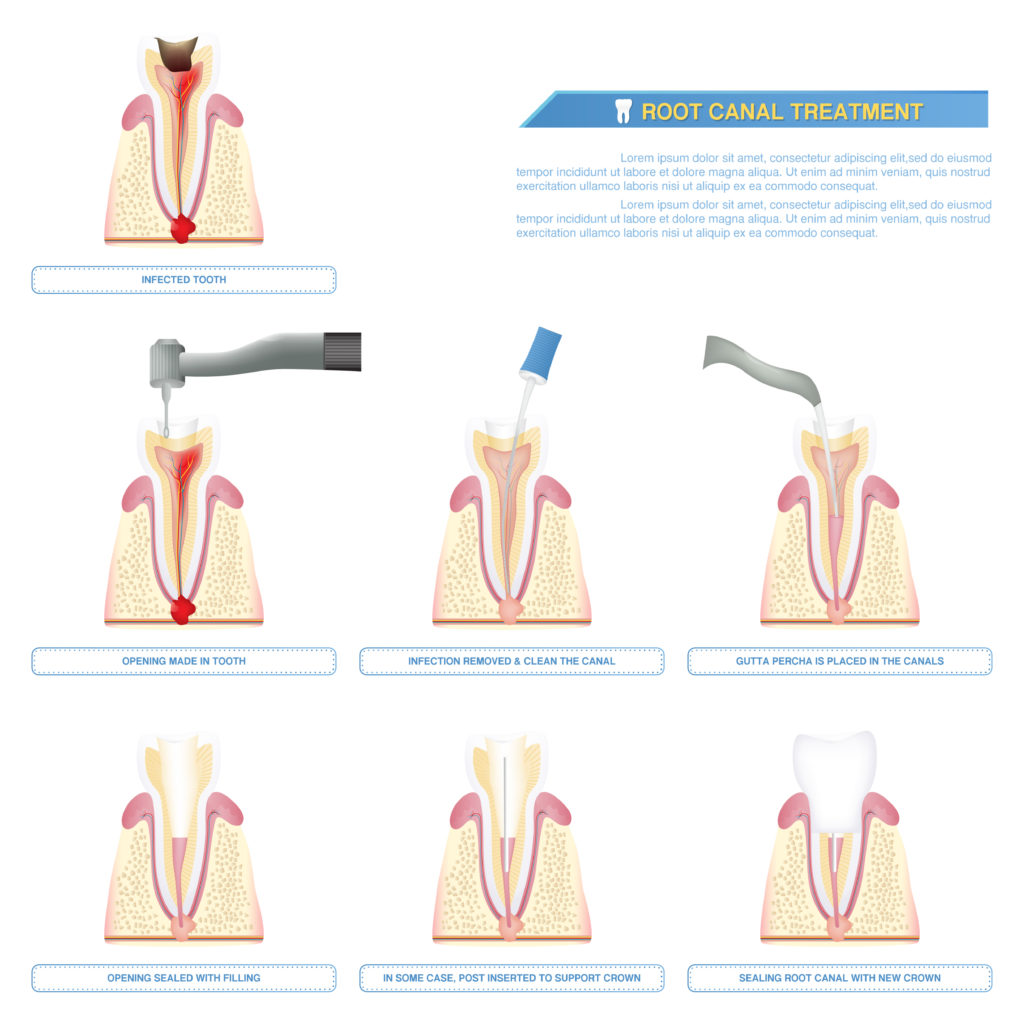Root Canal Treatment Specialist in NYC
When a patient learns that they need a root canal, their first reaction is often anxiety or fear. Yet, when you leave your care to our highly-trained endodontist at 172 NYC Dental, this common dental treatment is no more painful than a typical dental filling.
The caring and skilled team at 172 NYC Dental will walk you through every step of the root canal process, easing your fears and ensuring the procedure is as comfortable as possible. We utilize the latest dental technology, including digital X-rays and high-powered microscopes, to achieve precise results that will leave you smiling.
What Is a Root Canal?
Within each of your teeth is a pulp chamber. This delicate area of soft tissue contains dental pulp, blood vessels, nerves and connective tissue that help the roots grow as your teeth develop. Whether due to deep decay, a tooth fracture or trauma, dental pulp can become infected — a condition known as a tooth abscess. At this point, your dentist must remove the infection to prevent tooth loss and other potentially harmful dental conditions.
Please note our doctors use 3D scanners, so instead of dental impression that you see in the video below your dentist will use a digital wand. In addition, because we use 3D scanners the impression time is much shorter. Your overall experience is mush more pleasant.
The procedure to remove infected, inflamed or dead dental pulp is known as root canal therapy, more commonly shortened to just “root canal.” A root canal is an effective, safe and quick way to preserve your tooth as well as the overall appearance of your smile.
Some symptoms that could indicate you need a root canal include tooth tenderness, pain, gum swelling and sensitivity to heat, cold or pressure.
Book an appointment
The Root Canal Procedure
Many patients worry that their root canal treatment will be painful. However, this preventative procedure is designed to relieve your current painful symptoms and prevent future discomfort as well.

A root canal is a fairly straightforward process. After administering dental anesthesia, our dental specialist makes a small opening in the affected tooth. Using thin, sterile instruments known as endodontic files, your dentist is able to remove the infection and clean and shape the tooth’s canal.
Once the canal is ready, the pulp chamber is filled with a biocompatible material called gutta-percha. This specialized adhesive cement ensures the canal stays free of bacteria and debris. Gutta-percha is also used to seal the small access hole. Depending on your level of infection, your dentist may need to inject the tooth with antibiotics.
Once your root canal is complete, your dentist will discuss whether or not a post and root canal crown are needed to restore your tooth.










